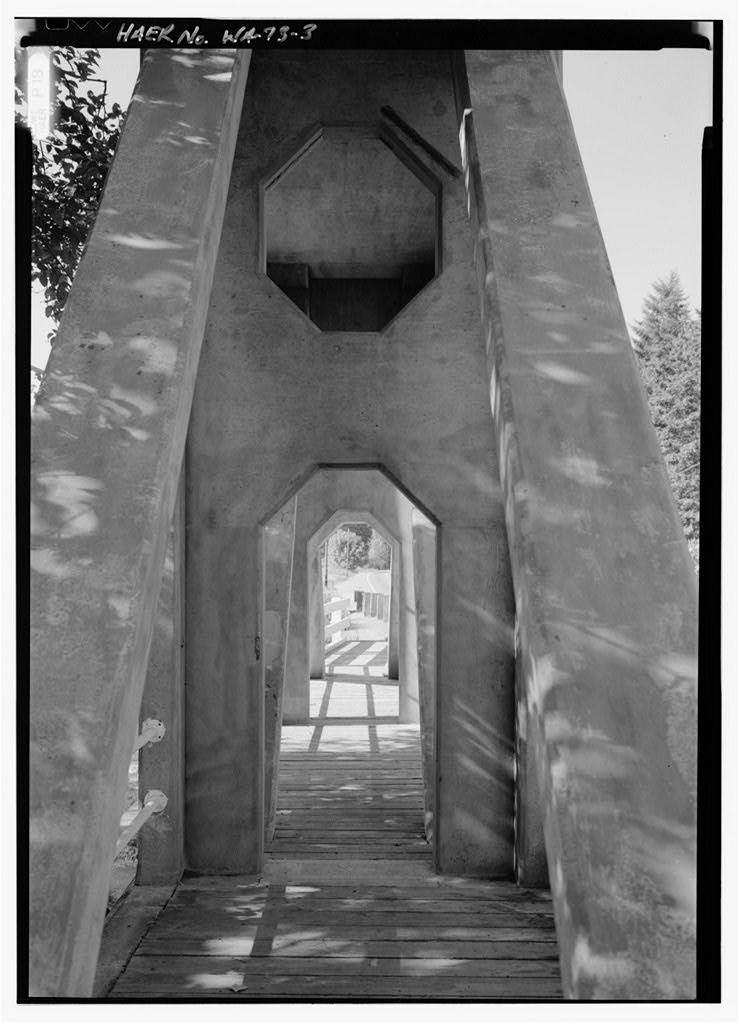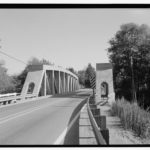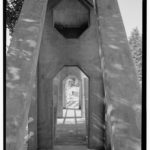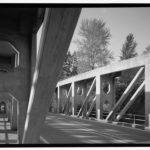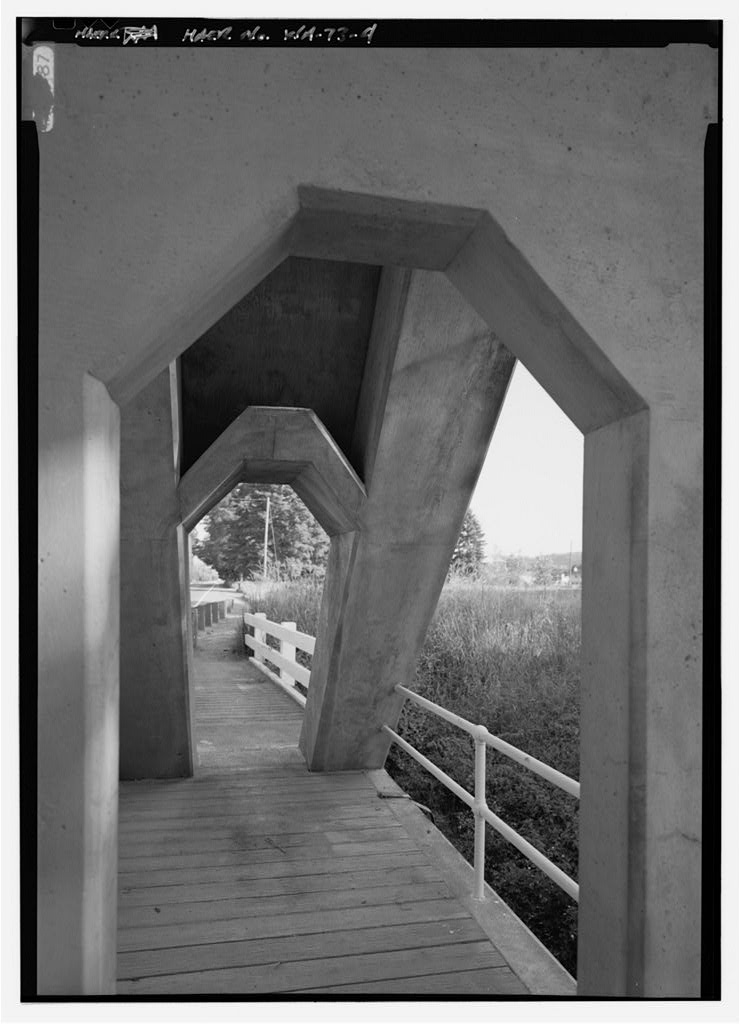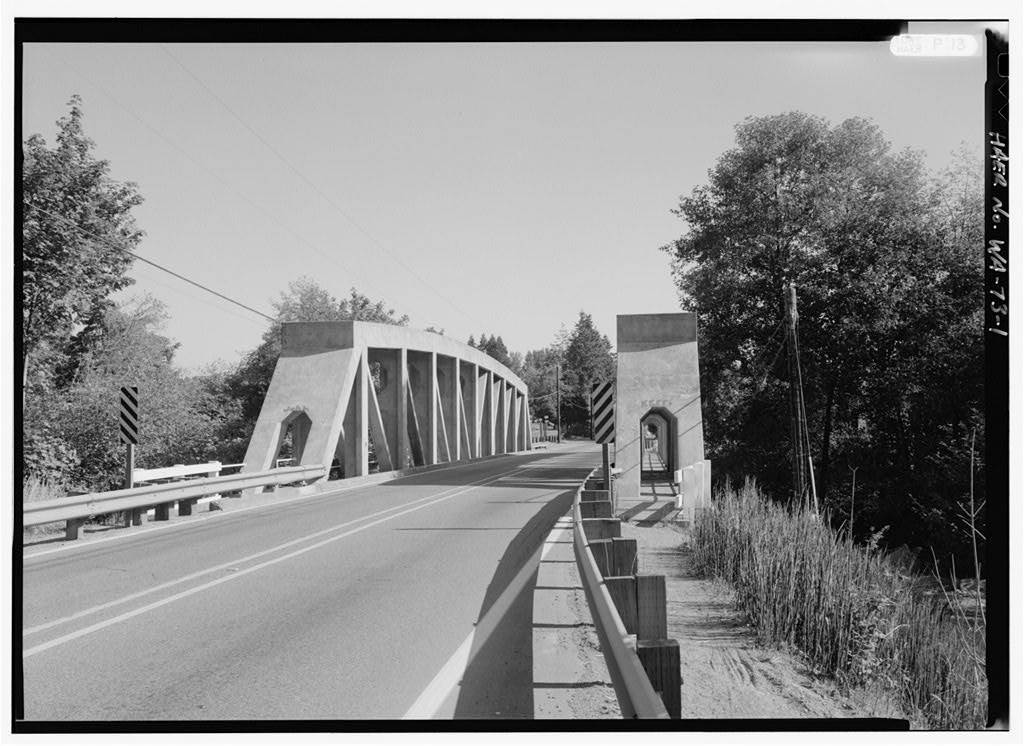The Pierce County Landmarks and Historic Preservation Commission is scheduled next month to review a nomination to place the 79-year-old McMillin Bridge on the county’s register of historic places.
In November, the Washington Trust for Historic Preservation nominated the bridge, which is listed on the National Register of Historic Places but faces demolition by the Washington State Department of Transportation (WSDOT).
“Given the McMillin Bridge’s listing in the National Register, we felt it was appropriate to consider local level listing as well,” wrote Washington Trust for Historic Preservation Field Director Chris Moore in an e-mail sent to WSDOT last year and forwarded to the Tacoma Daily Index.
The county’s landmarks commission is scheduled to discuss the nomination during its meeting on Tues., Feb. 19 at 6 p.m. at the Pierce County Public Services Building (Annex), South Entrance, located at 2401 S. 35th St. in Tacoma.
The concrete McMillin Bridge, which is owned by WSDOT, has a long history in Pierce County. Built in 1934, it is a vital section of State Route 162 that connects Orting to Sumner. It also sits right next to an old railroad bridge that is now part of the Foothills Trail. For several years now, WSDOT officials have said the McMillin Bridge is functionally obsolete and a new bridge needs to be built. WSDOT plans to build a new bridge just east of the McMillin Bridge and tear down the McMillin Bridge.
The proposal concerns many historic preservationists throughout Washington State and beyond. The bridge was designed by Homer M. Hadley, a man who is famous to bridge engineers and local historians, and whose work contributed to bridges spanning rivers, lakes and creeks throughout Washington State. He pushed for the state to build a floating concrete bridge across Lake Washington. Today, the westbound span of the Interstate 90 floating bridge is officially named the Homer M. Hadley Memorial Bridge.
The McMillin Bridge’s inclusion on the National Register of Historic Places is only an honorary designation with little regulatory bearing other than what is known as “Section 106” of the National Historic Preservation Act of 1966. In the case of the McMillin Bridge, Section 106 requires that a federal agency consult with a range of stakeholders (also known as “consulting parties”) that includes WSDOT, Pierce County, Army Corps of Engineers (ACOE), Washington State Department of Archaeology and Historic Preservation (DAHP), the National Trust for Historic Preservation, Washington State University, Washington Trust for Historic Preservation, bridge historians, retired bridge engineers, architectural historians, and even the Society of the Preservation of Historic Cements to determine if demolishing the bridge will have any adverse effects. Because the McMillin Bridge crosses a body of water (the Puyallup River), the lead federal agency in this case is the ACOE. In the end, it’s the Corps that will get to decide whether to issue the permit allowing the new bridge to be built and the old bridge to come down.
Still, WSDOT appears confident that it will eventually receive a permit and move forward with the project. In August, WSDOT project manager Steve Fuchs told the Index the bridge design was nearly completed, there are some right-of-way properties to acquire, and utilities still needed to be relocated. WSDOT was “still working to obtain all the permits needed to build the project,” said Fuchs. “We are following the Section 106 process to evaluate alternatives that avoid impacting this historic structure. The Army Corps of Engineers is guiding us through the process because they will ultimately issue the permit to build the bridge.” He added that WSDOT expected to begin construction in Spring 2014, and noted $15 million had been set aside for the project.
Meanwhile, historic preservationists and bridge engineers have sent letters and e-mails urging WSDOT and the ACOE to save the bridge. They argue the McMillin Bridge, reported to be the longest concrete truss bridge in the country, is an engineering marvel for its time. The bridge’s sidewalks run through the trusses rather than beside them, creating a built-in covered walkway for pedestrians. And the thick and sturdy concrete trusses mean there is no need for lateral bracing over the roadway.
The nomination prepared by the Washington Trust for Historic Preservation notes the bridge is an example of “engineering in its most creative, artistic expression. That is to say, the McMillin Bridge is a work of art representing engineering at its finest.”
Over the past two years, WSDOT has prepared three Preservation Alternatives Analysis reports arguing for the bridge’s demolition. Still, with each report, the Corps has not been satisfied that the Section 106 process has been met. The three reports completed by WSDOT between December 2010 and July 2011 have all resulted in the ACOE asking more than 30 follow-up questions. In one report prepared in July 2011, ACOE project manager Sandra Manning responded in part, “The Corps has reviewed this analysis and has determined that WSDOT has not provided sufficient information in the analysis to justify removal of the bridge.”
On Jan. 4, 2013, WSDOT submitted its most recent Preservation Alternatives Analysis report to Manning and the ACOE.
“I would like to take this opportunity to invite you to review the analysis, and provide any comments to me for the Corps consideration in the permit review,” wrote Manning in an e-mail to a group of stakeholders that includes WSDOT, Pierce County, ACOE, DAHP, the National Trust for Historic Preservation, Washington State University, Washington Trust for Historic Preservation, bridge historians, retired bridge engineers, and architectural historians. “Please provide me any comments within 30 days, by February 8, 2013. I will be scheduling a meeting to discuss the final analysis in mid-February.”
For earlier Tacoma Daily Index coverage of historic McMillin Bridge, click on the following links:
- Year In Review: Saving McMillin Bridge (Tacoma Daily Index, Dec. 17, 2012)
- Fearing its demolition, preservationists nominate McMillin Bridge to Pierce County’s historic register (Tacoma Daily Index, Nov. 16, 2012);
- Pierce County’s historic McMillin Bridge has lasted almost 80 years. Can it survive WSDOT? (Tacoma Daily Index, Sept. 7, 2012);
- Future uncertain for historic McMillin Bridge (Tacoma Daily Index, May 9, 2011).
For more information about Homer M. Hadley, the McMillin Bridge, and WSDOT’s project, click on the following links:
- WSDOT’S McMillin Bridge project website
- WSDOT’s McMillin Bridge public documents website
- Historic American Engineering Record’s McMillin Bridge photographs and drawings
- HistoryLink.org’s Homer M. Hadley Biography
- Washington Trust for Historic Preservation’s “Most Endangered List”
Todd Matthews is editor of the Tacoma Daily Index and recipient of an award for Outstanding Achievement in Media from the Washington State Department of Archaeology and Historic Preservation for his work covering historic preservation in Tacoma and Pierce County. He has earned four awards from the Society of Professional Journalists, including third-place honors for his feature article about the University of Washington’s Innocence Project; first-place honors for his feature article about Seattle’s bike messengers; third-place honors for his feature interview with Prison Legal News founder Paul Wright; and second-place honors for his feature article about whistle-blowers in Washington State. His work has also appeared in All About Jazz, City Arts Tacoma, Earshot Jazz, Homeland Security Today, Jazz Steps, Journal of the San Juans, Lynnwood-Mountlake Terrace Enterprise, Prison Legal News, Rain Taxi, Real Change, Seattle Business Monthly, Seattle magazine, Tablet, Washington CEO, Washington Law & Politics, and Washington Free Press. He is a graduate of the University of Washington and holds a bachelor’s degree in communications. His journalism is collected online at wahmee.com.
